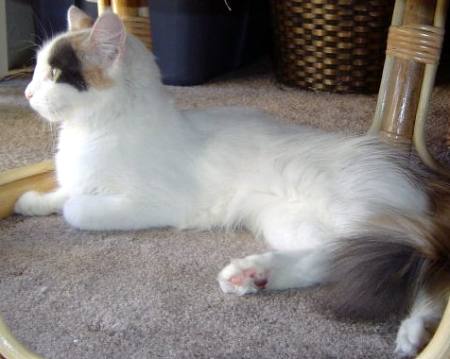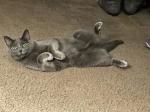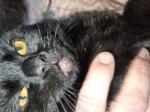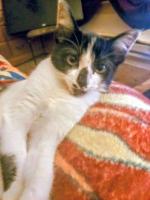The Water Loving Turkish Van Cat
The Turkish Van is a longhair breed with a bushy tail. This cat loves the water, and is surprisingly low maintenance.
If you are looking for a rare, distinctive looking longhair cat, then you may want to take a close look at the Turkish Van.
The Van is also known as the swimming cat. Unlike most other cats, they enjoy the water, and have been known to take a leisurely swim in the backyard pool. The breed originated in the Lake Van region of Turkey, which may explain their love of water.
The Turkish Van was developed before the seventeen hundreds from local cats. The Van is what is called a natural breed. That is, it developed on its own and is used to fending for itself in its natural environment.
As such, you should be warned, (and it should be no surprise) that this breed is sometimes considered a bit aloof and independent compared to other breeds. This may be primarily due to the fact that they don't like to be picked up and held.
All in all, though, Vans are said to be very loving and playful, with some being willing to play fetch. They are loyal to their owners and may adopt a "favorite person" that they will focus more of their attention on. This may also be why some they're aloof.
Some references state that if you have other pets, you may not want to add a Van to your household. Although each cat is different, these cats often don't always get along well with dogs or even other cats.
The key here may be that since Vans like to be the top cat, you may have trouble with another animal that also wants to be dominant. Still, proper introductions often go a long way to mending relationship issues before they even start.
It's been said also that this breed may not be the ideal choice for families, as the Van is not interested in riding in doll carriages or being dressed up for tea parties. You might try a more pliable breed for that, perhaps a Ragdoll. Keep in mind that most cats probably won't put up with that nonsense anyway. They are far too dignified!
While the Van enjoys spending some time alone, the breed is still quite playful and enjoys having a variety of toys to play with. In addition, although she may not pine for you during the day, your Van will enjoy spending time with you in the mornings and evenings, and may greet you at the door.
Just don't expect her to curl up in your lap for hours on end while you watch the news. While some may do this (more likely lying next to you rather than in your lap), they are often too active to be lap cats.
This cat is large and muscular, taking three to five years to reach maturity. They have a wedge shaped head and large, round eyes. These cats can have eyes that are golden (amber) or blue. Mismatched eye color is also common.
In recent times, some green eyed cats have also been produced in this breed. The green color, however, is not highly favored. This cat breed's striking appearance is completed by a long, bushy tail, that has been described as a brush, or fox-like.
The most distinctive characteristic of the Turkish Van is the breed's unique marking pattern. These cats can only have color on their heads and tails. The rest of their bodies must be pure white. This is now commonly known as the Van pattern, and that term is applied to any cat with that coloration.
The colored portions of the Van's body can be Auburn, Cream, Black, Blue and Tortoiseshell. Although all of these colors are allowed by the Cat Fanciers Association, some other associations are much more strict and only accept Auburn and Cream colors. In any case, they are quite beautiful and majestic.
Although the Turkish Van has a longhair coat and a very long and bushy tail, this breed does not need an extensive amount of grooming. The coat of the Van is very silky, and unlike its long haired Persian cousins, rarely tangles.
You should brush your cat at least once or twice a week, however, to remove loose hair, food, dander, and so on. More grooming sessions are better, of course, and will give your cat some extra attention.
In addition, grooming your cat can help prevent problems with hairballs, as hairballs are most often formed when cats swallow loose hair while they are grooming themselves.
Hairballs are also the number one cause of constipation in cats, which is a common health condition.
If you do decide that the Turkish Van is right for you, you should be prepared to have it join you in the bath. Perhaps you and your will take a swim in the pool as well.
You should be prepared to wait for a while for a kitten to become available. Also, depending upon where you live, there may not be a Van breeder nearby.
If you want to meet in person before bringing your kitty home, you may have to be prepared to travel to get your new cat. Otherwise, some breeders will ship cats, but I don't ordinarily recommend this.
Although this breed is not rare in its native Turkey, the Van is highly valued there, and is relatively rare in the rest of the world.




Comments: What do you think?
Have your say about what you just read. Leave me a comment in the box below.